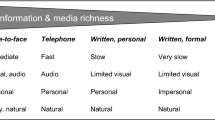Abstract
Twitter.com is a “micro-blogging” website. Although Twitter use is growing rapidly, little is known about health behavior discussions on this site, even though a majority of messages are publicly available. We retrieved publicly available Twitter messages during a 5-week period in early 2012, searching separately for the terms “Pap smear” and “mammogram.” We used content analysis to code each 140-character message, generating a separate coding framework for each cancer screening term and calculating the frequencies of comments. Using the brief account description, we also coded the author as individual, organization, or news media outlet. There were 203 Pap smear and 271 mammogram messages coded, over three fourths of which were from individual accounts. Overall, 22 % of Pap smear messages and 25 % of mammogram messages discussed personal experiences, including attending appointments, negative sentiment about the procedure, and results. Other messages from both individuals and organizations (8 % Pap smear, 18 % mammogram) promoted screening. About one quarter of the messages expressed personal experiences with cancer screening. This demonstrates that Twitter can be a rich source of information and could be used to design new health-related interventions.


Similar content being viewed by others
References
Chou WY, Hunt YM, Beckjord EB, Moser RP, Hesse BW (2009) Social media use in the United States: implications for health communication. J Med Internet Res 11(4):e48
The social skinny (2012) 99 New Social Media Stats for 2012, Available at http://thesocialskinny.com/99-new-social-media-stats-for-2012/ Accessed 29 May 2012
Gibbons MC, Casale CR (2010) Reducing disparities in health care quality: the role of health IT in underresourced settings. Med Care Res Rev 67(5 Suppl):155S–162S
Pew Internet & American Life Project (2010) Mobile health 2010. Available from http://pewinternet.org/Reports/2010/Mobile-Health-2010.aspx. Accessed 23 April 2012
Rajani R, Berman DS, Rozanski A (2011) Social networks-are they good for your health? The era of Facebook and Twitter. Qjm Int J Med 104(9):819–820
Hawn C (2009) Take two aspirin and tweet me in the morning: how Twitter, Facebook, and other social media are reshaping health care. Heal Aff 28(2):361–368
Harlow S, Johnson TJ (2011) Overthrowing the protest paradigm? How The New York Times, Global Voices and Twitter covered the Egyptian Revolution. Int J Comm 5:1359–1374
St Louis C, Zorlu G (2012) Can Twitter predict disease outbreaks? BMJ 344:e2353
Signorini A, Segre AM, Polgreen PM (2011) The use of twitter to track levels of disease activity and public concern in the US during the Influenza A H1N1 pandemic. Plos One 6(5):e19467
Moore RJ (2009) Twitter data analysis: an investor’s perspective. Available from http://techcrunch.com/2009/10/05/twitter-data-analysis-an-investors-perspective-2/. Accessed 29 April 2012
eMarketer (2011) U.S. Digital media usage: a snapshot of 2012
Pew Internet & American Life Project (2012) Twitter use 2012: Pew Research Center, Available at http://pewinternet.org/Reports/2012/Twitter-Use-2012.aspx. Accessed 9 July 2012
eMarketer (2012) Facebook’s US user growth slows but Twitter sees double-digit gains
United States Preventive Services Task Force. Recommendations for adults, Available at http://www.uspreventiveservicestaskforce.org/adultrec.htm. Accessed 9 July 2012
Pope C, Mays N (1995) Reaching the parts other methods cannot reach—an introduction to qualitative methods in health and health-services research. Br Med J 311(6996):42–45
Sandelowski M (2000) Whatever happened to qualitative description? Res Nurs Heal 23(4):334–340
Graneheim UH, Lundman B (2004) Qualitative content analysis in nursing research: concepts, procedures and measures to achieve trustworthiness. Nurse Educ Today 24(2):105–112
Moyer VA (2012) Screening for cervical cancer: U.S. Preventive Services Task Force recommendation statement. Ann Intern Med 156(12):880–891
Hoyo C, Yarnall KS, Skinner CS, Moorman PG, Sellers D, Reid L (2005) Pain predicts non-adherence to Pap smear screening among middle-aged African American women. Prev Med 41(2):439–445
Waller J, Marlow LA, Wardle J (2009) Anticipated shame and worry following an abnormal Pap test result: the impact of information about HPV. Prev Med 48(5):415–419
Kahn JA, Slap GB, Bernstein DI et al (2007) Personal meaning of human papillomavirus and Pap test results in adolescent and young adult women. Health Psychol 26(2):192–200
Hislop TG, Harris SR, Jackson J et al (2002) Satisfaction and anxiety for women during investigation of an abnormal screening mammogram. Breast Canc Res Treat 76(3):245–254
Montgomery M, McCrone SH (2010) Psychological distress associated with the diagnostic phase for suspected breast cancer: systematic review. J Adv Nurs 66(11):2372–2390
Taylor VM, Yasui Y, Nguyen TT et al (2009) Pap smear receipt among Vietnamese immigrants: the importance of health care factors. Ethn Heal 14(6):575–589
Blewett LA, Johnson PJ, Lee B, Scal PB (2008) When a usual source of care and usual provider matter: adult prevention and screening services. J Gen Intern Med 23(9):1354–1360
Acknowledgments
All authors have fulfilled the criteria for authorship established by the International Committee of Medical Journal Editors and approved submission of the manuscript.
Conflict of interest
None of the authors had conflicts of interest. Dr. Sarkar was supported by a AHRQ career development award K08 HS017594. None of the funders had any role in the design and conduct of the study; collection, management, analysis, or interpretation of the data; or preparation, review, or approval of the manuscript.
Author information
Authors and Affiliations
Corresponding author
Rights and permissions
About this article
Cite this article
R. Lyles, C., López, A., Pasick, R. et al. “5 Mins of Uncomfyness Is Better than Dealing with Cancer 4 a Lifetime”: an Exploratory Qualitative Analysis of Cervical and Breast Cancer Screening Dialogue on Twitter. J Canc Educ 28, 127–133 (2013). https://doi.org/10.1007/s13187-012-0432-2
Published:
Issue Date:
DOI: https://doi.org/10.1007/s13187-012-0432-2




